Table of contents
Turmeric ( Curcuma longa, turmeric, turmeric, goldenseal) has a spicy, nutty aroma, accompanied by a hint of bitterness. The raw rhizome (rootstock) can be chopped and added to salads.
Use in the kitchen
What does turmeric taste like? The fresh turmeric rhizome has a resinous, slightly burning, earthy-bitter taste. The root looks very similar to ginger and galangal, but is intensely reddish-yellow inside. The peeled rhizome is known both fresh (raw) and dried as a spice and colorant (turmeric powder).
Eating fresh turmeric: We often get questions like Can you eat raw turmeric (effects)? or Why not eat turmeric root raw?. Finely grated as an ingredient in salad, as raw food or in a dish - you can eat raw turmeric root every day. Or You bite off a piece of the turmeric root. The tuber is easy to chew. You should actually eat some raw turmeric every day to promote your health (use a little pepper).
What can you do with turmeric? Turmeric can be used to make tea or the popular turmeric latte (see the recipe for the ingredient turmeric, ground). Thai cuisine in particular uses the fresh, raw turmeric rhizome in grated form. the yellow curry paste is created. Curry consists mainly of turmeric (turmeric root). Of course, you can also cook turmeric, but then more in the curry mixture. Thai turmeric recipes often include rice and vegetable dishes. But: It is best to eat turmeric fresh .
How much turmeric can I eat raw? is also a common question. 3 to 5 grams per day is enough to achieve most of the advertised effects. More is probably above the optimum, unless it is spread over several meals a day. . With an average root size, that's half a root per person. The size can vary greatly, however. Because the skin (not the peel, although you can peel it) of the turmeric is also valuable, we recommend organic quality.
In India, turmeric has been used for thousands of years and is considered sacred. In Ayurveda (Ayurvedic medicine) it is considered a "hot" spice with cleansing and energizing effects. Turmeric is also used as a medicinal remedy in Chinese medicine. In western cuisine, raw turmeric plays a Curcuma is still mostly used dried and ground as a component of curry powder, as a cheap substitute for saffron or as a coloring in the food industry, e.g. for mustard, pasta or turmeric rice. But fresh, raw roots are becoming increasingly popular.
Vegan recipe for green smoothie with raw turmeric and spinach
For one person, prepare 50 g fresh leaf spinach, 40 g bananas, 35 g each of apples and pears, 190 ml water and about half a teaspoon of grated, raw turmeric (depending on taste). Chop the well-chilled ingredients and mix in a smoothie maker or blender until you reach the desired consistency. If you like, you can refine the drink with a little pepper. The vegan smoothie is best enjoyed fresh.
Eating fresh turmeric raw: Vegan recipes with fresh turmeric root (raw) can be found under the note: " Recipes that have the most of this ingredient ".
| Not only vegans or vegetarians should read this: Vegans often eat unhealthily. Avoidable nutritional mistakes. |
Purchasing - Storage
Fresh, raw turmeric rhizomes are best purchased in well-stocked health food stores, organic shops or organic supermarkets such as Denns and Alnatura. Some of the larger supermarket chains such as Coop, Migros, Denner, Volg, Spar, Aldi, Lidl, Rewe, Edeka, Hofer, Billa etc. or Asian shops sometimes sell the fresh version alongside dried turmeric powder (which can be irradiated, except for organic quality). Online retailers also offer fresh and raw turmeric, but You should look for a trustworthy organic seal and consider the sender's reviews. It is rare to find fresh turmeric roots at the weekly market, directly from the farmer or even in organic quality.
Since turmeric is mainly grown in tropical areas, the fresh rhizome is in season all year round. Turmeric cultivated in Central or Southern Europe is rare and is in season in winter.
Turmeric capsules are available as a dietary supplement. However, we recommend consuming raw, fresh turmeric at 3-5 g per day. A high dose of 8-12 g of turmeric daily (raw or cooked) can cause irritation of the stomach lining even in healthy people.
The availability of turmeric varies depending on the size of the store, catchment area, etc. If you are interested, click on our recorded food prices for the DA-CH countries (above under the ingredient image). There you will find current prices from various supermarkets and their price development.
Storage tips
The raw turmeric rhizome loves darkness and should be used up quickly, as turmeric loses its yellow color and aroma when exposed to light. Turmeric can be stored in the vegetable compartment of the refrigerator for about two to three weeks - or one to two weeks at room temperature To avoid the formation of mold, you should wrap the fresh rhizome in a kitchen paper if you have a humid climate. To store fresh turmeric for a longer period of time, you can freeze the pieces in portions. A rootstock can be stored in sand or soil at around 10 degrees Store in a dry place at 120°C. The roots can be dried out using heat and then processed into powder. This can be done dry using an electric coffee grinder.
Ingredients - Nutritional values - Calories
The turmeric rhizome contains essential oils with anti-inflammatory effects. The yellowish color is caused by curcumin or its derivatives (curcuminoids), which make up to 5.4% of the rhizome. 19 The most important chemical Components include curcumin, demethodycurcumin and bisdemethodycurcumin. 3
Unfortunately, there are no nutritional values for raw turmeric in the databases we use. There are studies in which you can find some nutritional values. 1,2 Unfortunately, some of the data are contradictory, such as values for amino acids 3 that are far too low compared to known values. for ground turmeric. For this reason, we have not listed some nutritional values - or, like the amino acids, we have calculated and stated them ourselves in relation to the amount of protein.
You can find all the ingredients of turmeric, the coverage of the daily requirement and comparison values with other ingredients in our nutrient tables. In the article Nutrients explained you will get a detailed insight into the topic.
Effects on health
Turmeric is used in folk medicine, especially in Ayurvedic and Traditional Chinese Medicine (TCM). There it is used to treat various ailments. There are no studies conducted on turmeric in Western medicine that show a healing effect. Underline the effect.
Is turmeric good for the liver? According to Ayurveda, turmeric helps against breathing problems, liver disorders, rheumatism, diabetic wounds, colds, coughs or anorexia. In TCM, turmeric is effective against stomach pain. In Indonesia, turmeric is considered a traditional remedy, especially for strengthening the immune system, as a prevention against infections and respiratory diseases.
Turmeric is not a superfood, but it does have health-promoting properties. What is turmeric good for? In general, turmeric stimulates digestion, reduces flatulence and has a positive effect on fat digestion. 2
Curcumin, the most studied ingredient in the spice turmeric, modulates a variety of signaling molecules that cover a wide range of effects in the human body and animal models. These include anti-inflammatory, antioxidant, hepatoprotective, chemopreventive, chemotherapeutic, antiproliferative, wound healing and antiparasitic effects. 13 Read more under "Use as a recognized medicinal plant".
Dangers - Intolerances - Side effects
Pregnant women, breastfeeding women and children under 12 years of age should not consume turmeric regularly or in large quantities, as there are hardly any study results on the effects or side effects for these groups of people. However, turmeric is harmless in moderate quantities. A high consumption of turmeric stimulates not only affects digestion, but it can also cause gastrointestinal problems or inhibit blood clotting. This is why people with haemophilia in particular should clarify before taking turmeric.
Use as a medicinal plant
Turmeric and its effects are interesting for scientific studies, but not always clear, as curcumin contains PAINS (Pan-Assay Interference Compounds), which are believed to cause false results in chemical tests. 17
Some yellow dyes such as curcumin have anti-cancer, antioxidant and anti-inflammatory effects, according to some authors. 7 However, there are also studies that suggest that curcumin breaks down the tumor suppressor protein p53, which therefore has possible cancer-promoting properties. 8 However, this is controversial, since in In 2006, the opposite effect was found in breast cancer cells, where the p53 concentration increased in curcumin-treated cells. In addition, no scientific evidence of these mechanisms has yet been provided in human subjects. In mice, there were positive studies on the effect against cystic fibrosis, but no positive effect in humans. 9
Curcumin has an influence on bone metabolism. In mice, it counteracts a loss of bone density caused by estrogen deficiency. It is still unclear whether curcumin promotes bone health in humans. 11,12 An anti-inflammatory effect of curcumin has been demonstrated in knee osteoarthritis, where it inhibits the enzymes cyclooxygenase-2, lipoxygenase and NO synthase. 6
Since we usually consume very little turmeric and, above all, the bioavailability of curcumin is very low, in vitro studies are difficult to transfer to humans. 4,5 In order to increase the bioavailability of curcumin, it is necessary to Piperine, a component ofblack pepper, although interactions are to be expected. 10,15 According to an in vivo study, curcumin attenuates fluoride-induced neurotoxicity. 16
How much curcumin is recommended and what quantities of turmeric powder or fresh rhizome does this correspond to?
The curcumin contained in turmeric can modulate several cell signaling pathways and has been used for therapeutic purposes in a variety of scientific studies, with one study using up to 12 grams daily for 3 months. 20
Based on a curcumin content of approximately 3.14% per 100g in pure turmeric powder 21 or up to 5.4% in fresh rhizome, 19 this would correspond to a daily amount of 380g powder or 220g fresh rhizome. However, with such In addition, the availability of curcumin can be increased by up to 2000% by adding pepper with the ingredient piperine. 10
Despite the sometimes very high amount of curcumin in various studies 22, the WHO has recommended a daily dose of curcumin of 0-3 mg/kg of body weight since 2013 23 - this corresponds to a maximum of 180 mg = 0.18 g for a person weighing 60 kg and thus 5.7 g powder or 3.3 g fresh rhizome.
It can be assumed that the majority of people tolerate amounts of less than 6 g of curcumin per day well. However, especially with long-term use, one should follow the WHO guidelines (at least at the beginning) and increase the dose according to tolerance and one's own discretion. The University Hospital Freiburg, Germany, has published a very informative and comprehensive work by Prof. Dr. Sigrun Chrubasik-Hausmann. 18
However, it should be noted that until a complete safety profile is available, excessive consumption should not occur during pregnancy and breastfeeding.
Ecological footprint - animal welfare
To produce 1 kg of turmeric, approximately 1657 litres of water are required. 24 However, the source cited here does not indicate whether the value refers to powder or the fresh tuber. The production of powder requires a lot of energy, as the tubers either Cook for up to 6 hours or cook for several hours. 25
Due to its special environmental requirements, turmeric has only been cultivated sporadically in Europe. In Austria, for example, it has been possible to cultivate organic turmeric in an unheated foil tunnel. 25 When buying, you can therefore pay attention to regionality. If turmeric comes from organic farming, then No synthetic fertilizers or insecticides are used. Since these have a harmful effect on the environment, organic products are preferable to conventional ones, both in powder and fresh form.
The use of turmeric-based essential oils in agriculture has already shown good effects against various plant pests such as insects or mites in individual studies. Such an approach could be a good alternative or at least an option for reducing the use of synthetic plant protection products in the future. 26
Worldwide occurrence - cultivation
The turmeric rhizome comes from South Asia, where it is still found wild today, especially in Indonesia and Sri Lanka. It is cultivated mainly in the tropical parts of Asia and Africa. Turmeric grows wild in South Asian forests (eg in India and Indonesia).
Cultivation - Harvest
If you like to enjoy turmeric raw and fresh, you can grow the plant yourself - organically. A piece of organic turmeric root is all you need. The root is left completely open and germinates. This works best if you first let the root germinate for 8 to Soak in water at room temperature for 12 hours. However, the germination location should not be too moist to prevent mold from forming.
After planting, water the root a little. After two to three weeks, you should see a sprout appear. Curcuma forms a false stem and large leaves. In warm areas, the plant can be kept in the garden from June to August. The temperature can also be kept at night. not fall below 15 degrees Celsius. 14 In cooler regions, turmeric must be overwintered indoors or in a heated conservatory.
When the seedling has reached a few centimeters, plant it in a wide pot or in a vegetable box with potting soil. The turmeric seedling should point upwards and protrude slightly from the soil. A partially shaded place with room temperature and mostly moist soil without waterlogging would be ideal. Oxygen must be able to reach the roots.
After about nine months, the plant should have formed new rhizomes (roots). In winter, you can harvest 14 or propagate. Once the flowers and leaves have wilted, you can carefully dig out the rootstock.
If you want to multiply the plants again, you soak them again and let them germinate. This can be done at either end of the root and will first show a green colour. This way you can divide the root to grow several plants. However, the cut should first be Let them dry for a few days before planting them at a depth of about 5 cm. This is the method without prior germination in the air.
Further information
Are turmeric and ginger the same? Turmeric ( Curcuma longa) is a plant species within the ginger family (Zingiberaceae) and is related to ginger ( Zingiber officinale).
Zedoary root or white turmeric or zedoary ( Curcuma zedoaria) is a type of saffron root in India. White turmeric is very similar to turmeric. Curcuma zedoaria is used as a stomach, gall and liver remedy. There are many common names for it.
Alternative names
Wikipedia knows the following alternative names for turmeric: Curcuma, Curcume, Gelbsuchtswurz, Gilbwurtzel, Gilbwurzimber, Gurkume, Gurkumey, Gelber Ingwer, Mülleringer, Babylonian saffron, Indian saffron, Indian saffron, Javanese turmeric, Tumerik and Turmarik. 12 Other common names are Saffron root ( saffron root), turmeric (turmeric root) and yellow root (yellow root).
English names are turmeric, curcuma, Indian saffron, turmeric rhizome or turmeric root. Fingerroot or Krachai or Chinese ginger is also healthy (a medicinal plant), but has nothing to do with turmeric, although it is also used in Thai cuisine.
Other applications
The most common use of turmeric root is processing it into powder as a basis for curry spice mixtures. Its use as a colorant ranges from food to paper, varnishes and ointments. In chemistry, turmeric paper has been used as an indicator paper (similar to litmus paper, not litmus paper) for Alkalis are used (change point to brown-red at pH = 8.6). Curcumin is used as a reagent for the detection of boron in the form of boric acid and in acidic solution produces the red dye rosocyanin.
Since turmeric (Kurkume, Curcuma, not: Cucuma) is relatively inexpensive as a powder, counterfeiters often use it to dilute saffron powder; caustic soda helps to check this. When the alkaline lye is added, the extract of saffron threads diluted with turmeric turns red; without turmeric it would retain its yellowish color. The flower of the turmeric plant is cream to pink and long-lasting, which is why it is popular as a cut flower. 12
Bibliography - 26 Sources (Link to the evidence)
| 1. | Balakrishnan K. Postharvest technology and processing of turmeric. Ravindran P. N, Nirmal Babu K, Sivaraman K, editors. Turmeric: The Genus Curcuma. Boca Raton, FL: CRC Press; 2007. pp. 193–256. |
| 2. | Prasad S, Bharat B. Turmeric, the Golden Spice From Traditional Medicine to Modern Medicine. Herbal Medicine: Biomolecular and Clinical Aspects. 2011, 2(13). |
| 3. | Sharma D, Maheshwari A, Mohan P. Nutritional analysis of Curcuma longa L. in different cities of west uttar Pradesh (INDIA). International Journal of Chemical and Pharmaceutical Sciences. 2013;4(4). |
| 4. | Nelson K, Dahlin J et al. The Essential Medicinal Chemistry of Curcumin. Journal of Medicinal Chemistry. 2017, Jan, 60 (5). |
| 5. | Baker M. Deceptive curcumin offers cautionary tale for chemists. Spice extract dupes assays and leads some drug hunters astray. Nature. 2017, Jan, 541/7636. |
| 6. | Madu K, Chanda K, Saji M. Safety and efficacy of Curcuma longa extract in the treatment of painful knee osteoarthritis: a randomized placebo-controlled trial. Inflammopharmacology. 2012, Dez. |
| 7. | Aggarwal B, Shishodia S et al. Curcumin suppresses the "paclitaxelinduced" nuclear factor-kappaB pathway in breast cancer cells and inhibits lung metastasis of human breast cancer in nude mice. Clin Cancer Res. 2012, 11(20). |
| 8. | Tsvetkov P, Asher G et al. Inhibition of NAD(P)H:quinone oxidoreductase 1 activity and induction of p53 degradation by the natural phenolic compound curcumin. Proc. Natl. Acad. Sci. USA, 2005, 102(15). |
| 9. | Egan M, Pearson M et al. Curcumin, a major constituent of turmeric, corrects cystic fibrosis defects. Science, 2004, 304(5670). |
| 10. | Shoba G, Joy D et al. Influence of Piperine on the Pharmacokinetics of Curcumin in Animals and Human Volunteers. Planta Med, 1998. 64,(4). |
| 11. | Oh S, Kyung T, Choi H. Curcumin inhibits osteoclastogenesis by decreasing receptor activator of nuclear factor-kappaB ligand (RANKL) in bone marrow stromal cells. Mol. Cells. 2008, 26(5). |
| 12. | Kim W, Ke K et al. Curcumin protects against ovariectomy-induced bone loss and decreases osteoclastogenesis. J. Cell. Biochem. 2011. |
| 13. | Gupta SC, Patchva S, Koh W, Aggarwal BB. Discovery of curcumin, a component of the golden spice, and its miraculous biological activities. Clin Exp Pharmacol Physiol. März 2012;39(3):283–99. |
| 14. | Artikel zur Anpflanzung und Vermehrung von Gelbwurz mit Bildern: plantura.garden und smarticular.net |
| 15. | Prasad S, Tyagi AK, Aggarwal BB. Recent Developments in Delivery, Bioavailability, Absorption and Metabolism of Curcumin: the Golden Pigment from Golden Spice. Cancer Research and Treatment : Official Journal of Korean Cancer Association. 2014;46(1):2-18. |
| 16. | Sharma C, Suhalka P et al. Curcumin attenuates neurotoxicity induced by fluoride: An in vivo evidence. Pharmacognosy Magazine. 2014;10(37):61-65. |
| 17. | Baell J, Walters MA. Chemical con artists foil drug discovery. Nature 513, 25 september 2014:481-483. |
| 18. | Uniklinik-freiburg.de Chrubasik-Hausmann S. Kurkuma - Wissenschaftliche Zusammenfassung. Forschungsprojekt "Pflanzliche Drogen". 2015. |
| 19. | Nagpal M, Sood S. Role of curcumin in systemic and oral health: An overview. J Nat Sci Biol Med. 2013;4(1):3–7. |
| 20. | Vadhan-Raj S, Weber D, Wang M et al. Curcumin downregulates NF-КB and related genes in patients with multiple myeloma: results of a phase 1/2 study. Blood. 2007;110(11):357a. |
| 21. | Tayyem RF, Heath DD, Al-Delaimy WK, Rock CL. Curcumin content of turmeric and curry powders. Nutr Cancer. 2006;55(2):126–31. |
| 22. | Gupta SC, Patchva S, Aggarwal BB. Therapeutic roles of curcumin: lessons learned from clinical trials. AAPS J. 10. November 2012;15(1):195–218. |
| 23. | Efsa.europa.eu Europäische Behörde für Lebensmittelsicherheit. Scientific Opinion on the re-evaluation of curcumin (E 100) as a food additive. Zitiert 30. Oktober 2021. |
| 24. | Mekonnen MM, Hoekstra AY. The green, blue and grey water footprint of crops and derived crop products. Hydrol. Earth Syst. Sci. 2011; 15: 1577-1600. |
| 25. | Sturm VK. Superfood Kurkuma. Diplomarbeit Karl-Franzen-Universität Graz. 2020. |
| 26. | Pandey AK, Silva AS, Varshney R, Chavez-Gonzales M, Singh P. Curcuma-based botanicals as crop protectors: From knowledge to application in food crops. Current Research in Biotechnology. 2021; 235-248. |

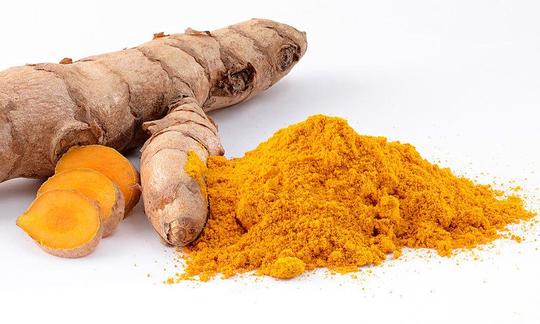

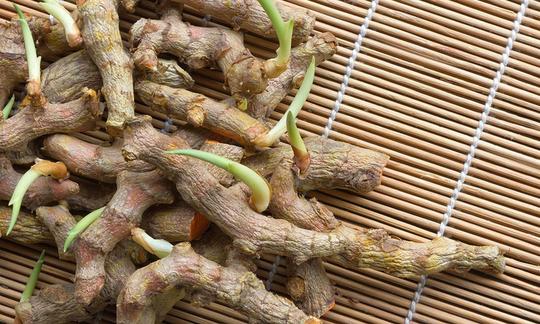

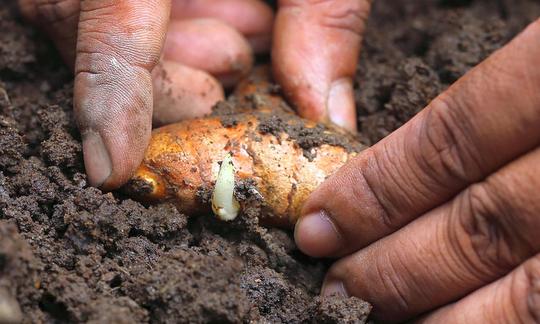

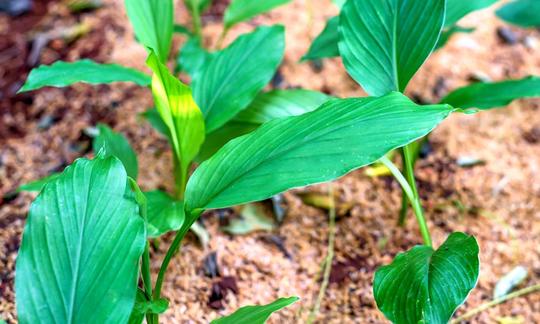

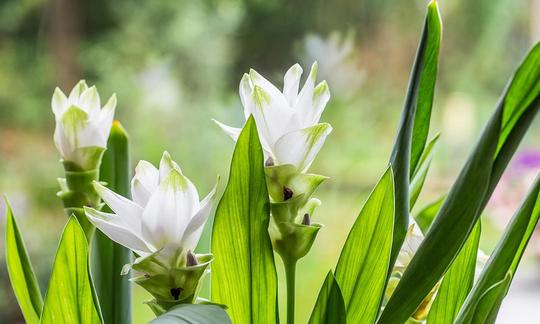

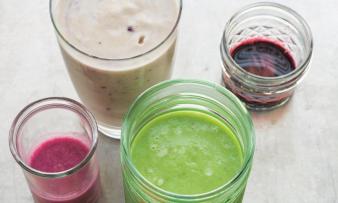
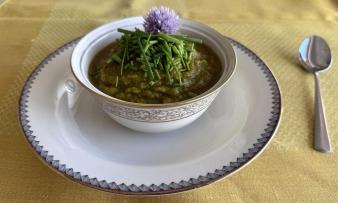
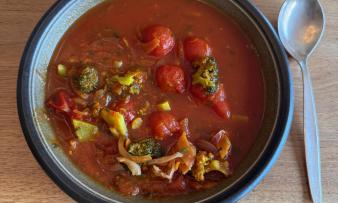

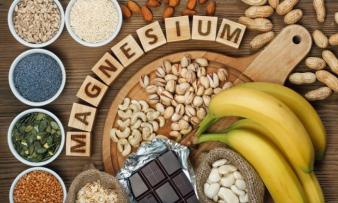



Comments